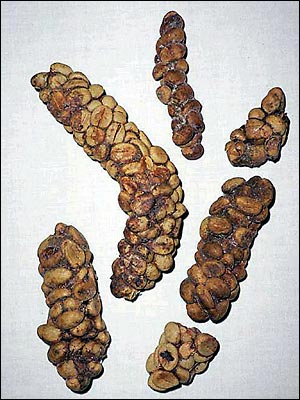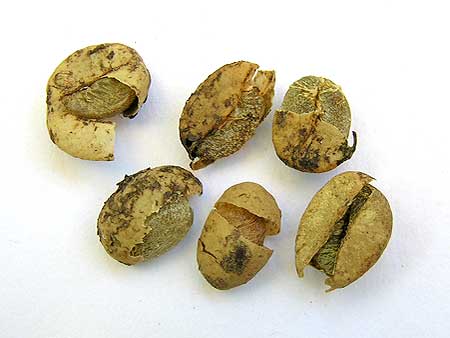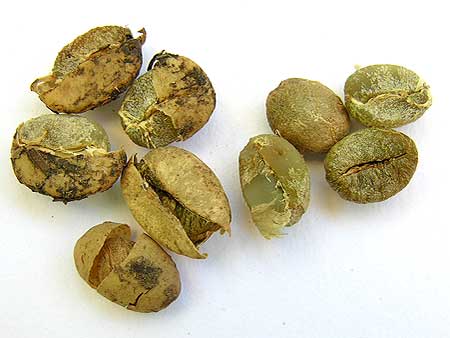Do you know about Kopi Luwak?
Kopi luwak or Civet Coffee is an exclusive coffee made from the beans of coffee berries which have been eaten by the Asian Palm Civet and other related civets, then passed through its digestive tract.
What happens to the coffee beans between when they are on the tree and when they finally become the world’s most exclusive beverage?
Kopi luwak begins life as does any other coffee as a small red fruit on a coffee tree. At this point things change and for reasons known only to the Luwak, the cherry is selected and then eaten by a Luwak. The cherries that have been eaten come out looking like this!
The pieces of kopi luwak are then broken down into individual beans that, while they may appear unclean, still retain the pergamino (the thin skin surrounding the coffee bean) which prevents the coffee bean itself from coming into contact with anything else in the stomach of the Luwak. At this point the coffee beans have probably only been off the tree for a very short period of time, they are still green and contain too much moisture. They are spread across the ground on top of dark coloured canvas for between 4 and 7 days, depending on the weather. Drying the coffee causes the bean inside to shrink and the outer pergamino to become brittle and crack making it easier to remove.
After drying for a week, the thin papery pergamino has cracked and the coffee beans inside, quite clearly visible in this image, have dried out and shrunk. The dried beans are put into a wooden mortar and pounded with a pestle causing the brittle pergamino to fragment and fall apart.The coffee beans are hard and are unaffected by the pounding whereas the pergamino has completely broken down into dust and chaff which is easily removed through winnowing.
The beans to the left retain the pergamino while it has already been removed from the beans to the right. Some beans still have a thin fibrous coating that is more difficult to completely remove and is what becomes caught in the chaff collector when the beans are roasted.
The final step in obtaining premium quality green kopi luwak beans is manual sorting, a process that is both time consuming and labour intensive. Any beans that are unsuitable for sale or appear irregular are removed by hand so that the beans you purchase are as near to perfect as is humanly (and Luwakly) possible. The beans can be stored green for a considerable period of time with no ill effect. This process yields a coffee with unusual taste and lack of bitterness.
It’s worth tasting it!
Source: Wikipedia.org and animalcoffee.com


